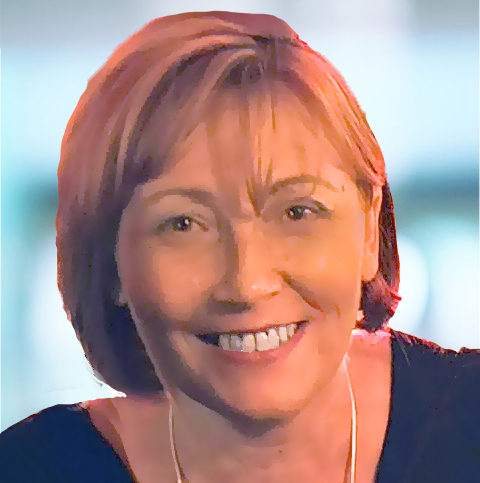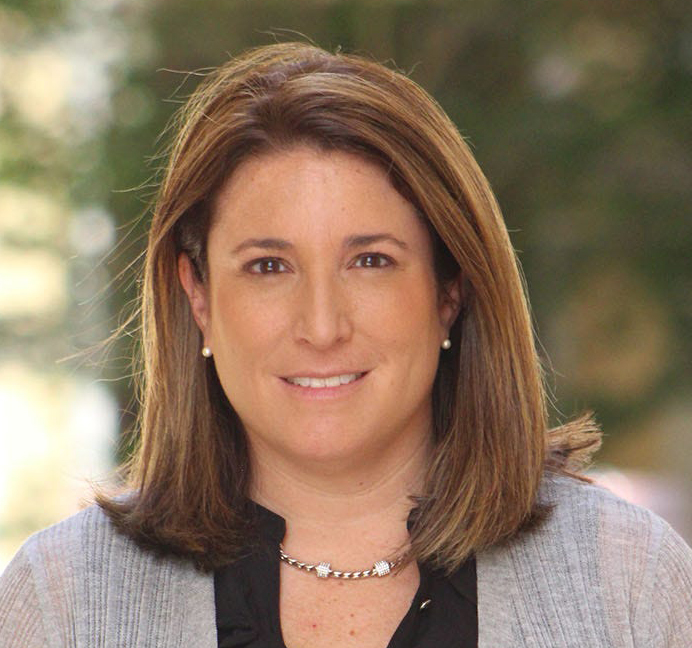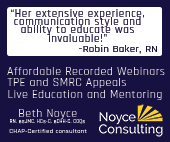
The Rowan Report:
First off, thank you for taking the time to talk with me today. Can you give our readers a brief introduction about you and your background?
Dr. Pamela Ograbisz:
I have been in telehealth for about 19 years now. I’ve been a nurse practitioner for 25 plus years. My specialty is cardiothoracic surgery and critical care. I have it was started out as a nurse in CT surgery, went back to school, became a nurse practitioner, then worked in CT also my entire career in critical care. We had an opportunity roughly 17 years ago when I was working in a cardiothoracic unit where we were connected by bridges and tunnels and water.
RR:
And, how did you come to be involved in telehealth?
Ograbisz:
We covered seven different sites and we weren’t able to get to all of our patients in a timely manner. We were struggling. We were trying to figure that out. A nurse reached out to us and was on a flip phone. She was taking photos and sending things and we were able to piece together a plan because of that. We literally all sat down that night after around and said, we need to do something like this. And we were attached to a medical school. And so we got them involved as well. And we built one of the first ICU bunkers in the classroom for telemedicine. And it was really sort of the beginning of something amazing. And I saw how well it worked. And I had the privilege of going around and building more of those programs.
RR:
And this eventually brought you to LocumTenens.com?
Ograbisz:
I was recruited by LocumTenens.com. When I first joined them, they had roughly 7% of their business was tele[health] and it was all behavioral health and they were really trying to expand their footprint. And of course, this was prior to COVID, we were still dealing with a lot of legislative issues and not everybody necessarily believed in it. It was still very scary for people and we were trying to sort of showcase what we could do. And so I came in and wrote a lot of policy and procedure and then COVID happened and we had to flip everything over it and we were poised to do so, which was fantastic.

So overnight we started turning on just loads of programs, 100% virtual. And then honestly, a lot of them never went back or they’ve come to a hybrid model. So now you can then convert those programs from traditional boots on ground all the time to more, you know, expandable, flexible models that have a hybrid option that includes telehealth.
RR:
Are you still operating the telehealth programs for LocumTenens.com?
Ograbisz:
My role now is I run LT Telehealth, which is a company inside of LocumTenens.com. We’re not a stand alone, but we do run all of the telehealth programs inside of the company. I also oversee all APP (advanced practice provider) relationships and how we’re growing that business and then our legislative arm.
RR:
LocumTenens.com is a full service staffing company, right? How are you finding the workforce shortage right now?
Ograbisz:
So, I would say that probably for a while, we commiserated with the health systems. But, filling the gaps from workforce shortage is our business.
I will tell you this, I graduated school a long time ago when I got out, it didn’t matter if you were a doctor or a nurse practitioner or a PA, your goal was to join a practice. You wanted to become a partner and you wanted your name on that building and you wanted to own a piece of that building. Nobody was owned by the hospital groups. I felt like with the evolution of the electronic health record, everything changed. People were asked to do a whole lot more. All of a sudden it became a lot of boxes to check a lot of things to tick. You sat on more and more committees. It became more and more about the paperwork. And then of course, with the advent of EHRs, billing changed; CMS codes changed how you got paid. People started bucking the system. And so what we saw then honestly was a shift. Now people coming out [of college] are like, yeah, I’m not joining a practice or I’ve left my practice. This gives me a new creative way to be part of medicine with flexibility which no one ever promised you when you got out of school. Right? No one ever said, “You want to be a cardiothoracic surgeon? Work, life balance is for you!” No, right? 80 hour weeks and sleeping in the hospital. You signed up for it; you knew it. And now people have been given a glimpse of what it can be and what it could be. And so I think that the physician shortage 100% exists, but COVID forced the gig economy. And so what we’re seeing is people wanting to work on their own terms and 1099 contracting does that for them.
RR:
How are you seeing telehealth working in care at home?
Ograbisz:
So, we’ve been working on the medical hospital-at-home pieces trying to figure out how we can sort of fit into that model. We’ve seen a lot of really wonderful pilot programs come out of Mayo and Hopkins and what they’re doing. I think the biggest problem right now is they’re not reimbursed well. That is making it very hard for other systems that don’t have deep pockets like those two facilities to scale those programs to any kind of large extent. What we would say is we know that it’s better. If a patient is too ill to leave home, we can facilitate a visit with the doctor right from the house. We’ve found it is especially helpful in the oncology program we launched when a doctor has to deliver bad news. The pushback we got was the patients are not going to be able to adapt and get that kind of news through a screen. But the patients really proved that wrong. It was the patients who said, “If someone’s going to tell me that I have six months [to live], I don’t really want to hear that in a sterile, cold, doctor’s office. I really am much happier if I could be in my own environment and process that information.”
RR:
What is standing in the way of a robust telehealth system for hospitals, physician groups, and home health?
Ograbisz:
I mean, CMS obviously needs to catch up with the telehealth. They were doing it during COVID. We need to extend that so that those payments, as long as the coding is all there, those payments need to come through for telehealth. But when you combine it with home health and hospice, you have that in person touch point. So the whole visit then is reimbursable, which is why a lot of hospitals and physician groups are partnering with home health, hospice, and palliative care or organizations now because you get that in-person visit, but everything is sent back to the physician to oversee changes in care, oversee changes in medication. At home care and physician care combined, the reimbursement goes into place because you have that touch point there, a face-to-face visit. They can verbally and visually see everything that’s going on, but then it goes back to the physician and they can then also get reimbursed for that. So there’s a lot of that with telehealth that is crossing over. Home health and hospice agencies need to start using telehealth and they need to be partnering with the ACOs and they need to be partnering with physician groups and now they have to partner with payers, especially as we move to the value based system. They have to partner with them because there’s only a certain amount of money that each patient is going to get. Some of it’s going to go to the hospital, some of it’s going to go to the physician and some of it’s going to go to the home health company and if there’s no partnership then there’s no money. So, you know, they have to take on some of that risk, but telehealth is the way to do that.
RR:
We’ve been talking a lot the last year or so about the rapid advancements in AI. What we’re seeing is that AI is impacting interoperability, telehealth, direct patient care, and so much more. What do you see happening in health care with Ai?

Ograbisz:
Yeah, I think it’s a huge unknown. I think everyone’s afraid to commit. I think there’s more scary stuff than there is positive stuff. So right now, what we’re worried about is someone taking on my identity, somebody being able to give advice in my voice with my likeness and put that out somewhere. So I think when you talk to providers, they see more of the scary side and how are we going to control it? But then you look at the most amazing pieces which is I can use AI to help me form a better diagnosis, to cultivate more ideas for how to treat things for each how process and procedure, right? How do we go about garnering information, which is what I think AI will help us do better in the telehealth space. I think it will be interesting to see where all of the programmatic goes. I think more towards like holographs and literally like Star Trek lead people into rooms, you know, life size images where it’s not just we go from just a 2D flat screen to really look at 4D, you know, being able to really see and perhaps even with scans and patient monitoring and you can hold the scanner up and I can see your liver, who knows? I think the possibilities are endless. But I think right now in all honesty, I think it’s fear…until we figure out a little bit of the regulatory side of it.
RR:
You’re also working on advocacy for telehealth on state and national levels. Will you follow up with us on how the next round goes as far as extending the reimbursement for telehealth?
Ograbisz:
Absolutely! I’ve written a lot of pieces that I’ll share with you. We’re always happy to collaborate.
RR:
Thank you, again for your time. Your insights were wonderful.
# # #


©2024 by The Rowan Report, Peoria, AZ. All rights reserved. This article originally appeared in Healthcare at Home: The Rowan Report. One copy may be printed for personal use: further reproduction by permission only.
editor@therowanreport.com

Pamela Ograbisz
Vice President of Clinical Operations
Pamela Ograbisz, Associate Vice President of Telehealth for LocumTenens.com. With 20 years of experience in cardiothoracic surgery and internal medicine, she is passionate about delivering quality healthcare in a timely manner. Dr. Ograbisz is confident that telehealth programs are the key to improving health and the overall patient experience



